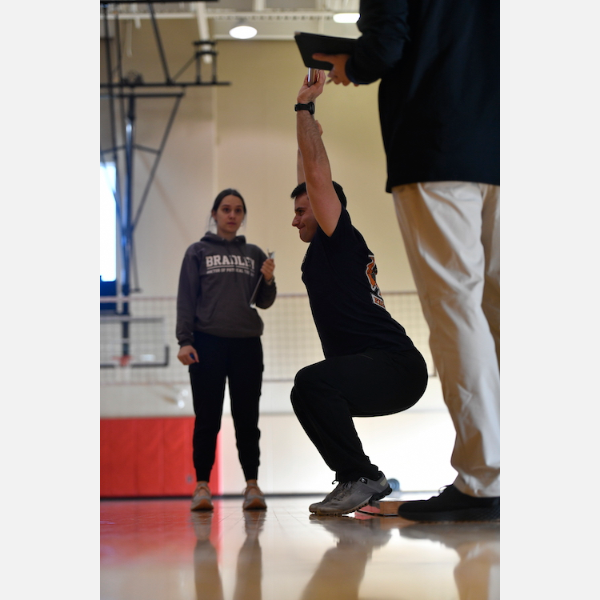Keeping Peoria firefighters healthy and fit, one yoga stretch at a time
Jason Whalen doesn’t match the usual notions of a person seeking new fitness goals at the start of a new year.
As a 15-year veteran of the Peoria Fire Department, Whalen is considered abundantly healthy and fit compared to the general population, in part due to the rigors and training required of day-to-day life as a firefighter. But he rattled off the improvements he’d like to see in 2023: better mobility, better cardio and alleviating some nagging hip pain.
This won’t be a fitness journey Whalen embarks on alone. Bradley students in the second year of earning their doctorate in physical therapy will work with Whalen and more than two dozen PFD firefighters this year, helping them maintain and even improve aspects of their fitness and health.
It’s part of an ongoing collaboration between Bradley University’s physical therapy program and the city’s fire department that started in 2021. Entering its third year, all parties involved believe the partnership represents a “win-win” for the students, firefighters and the city of Peoria.
“The more fit we are, the better we serve the community,” said Daniel Donahue, a Peoria firefighter for 11 years and one of the first participants in the collaboration.
Tricia Starkey, assistant professor in residence at Bradley, spearheaded the development of the program after fire department officials contacted the university in search of new and better ways to keep its firefighters in the premier shape the job requires.
Starkey saw the obvious community-based benefits from such a partnership, but she also liked the different challenge it posed to students who so far have only worked with ailing patients.
“Instead of working with an injured or unhealthy population, you’re working with a healthy population,” Starkey said. “With the firefighters, the question becomes: how do we keep them on a healthy track?”
In the echoing gym at the Markin Center, two of the 2nd-year students, Cassie Koll and Kyle Bulesco, listened intently to Whalen’s goals before running him through a battery of physical evaluations around the gym to measure balance, agility, strength and endurance.
This evaluation in February marked the assessment phase of the year-long collaboration, where students analyzed the goals of each firefighter and the results of their physical tests to determine an 8-week fitness regiment. The firefighters access the uploaded regiment in the TeamBuilder app, which updates weekly and daily with the exercises customized for each individual.
After their assessment, Bulesco and Koll sketched out a rough picture of what Whalen’s regiment will look like.
To address the hip pain, the initial focus will be on pain management through yoga stretches, such as child's pose, along with piriformis stretches like bringing a single knee to his chest.
They also recommended high intensity interval training for cardio improvements — sprinting for a minute, resting for two minutes and then back to sprinting. Bulesco said this will allow Whalen to work harder for longer stretches of time while on the job.
The two students both expressed excitement in developing creative exercises for the firefighters, in contrast to their prior clinical rotation experience with patients who don’t have active lifestyles or are recovering from significant procedures.
“We’ve seen individuals at an orthopedic clinic that have knee and hip replacements,” Koll said. “(Those patients) are the total opposite spectrum from firefighters running into burning buildings.”
“It’s good exposure to everything you’ll see out there in a physical therapy career,” Bulesco added.
— Thomas Bruch



